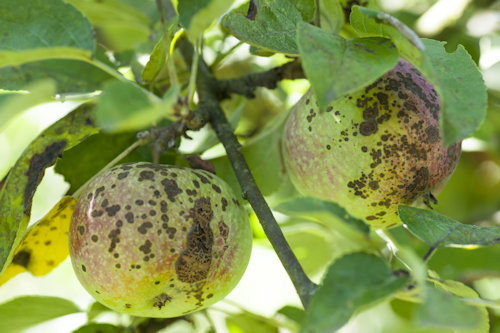Did you know that apple trees can live for as long as half a century?
While a long life full of delicious apples is possible, there are plenty of things that can shorten your tree’s lifespan, including a disease known as apple scab.
Are you wondering what that is? Keep reading to learn all about apple scab in Southern Maryland and what you can do to both treat it and prevent it.
1. What Is the Threat
Has anyone ever asked you, “What is apple scab?” Apple scab is a type of disease that can afflict trees and the fruit they bear, such as pears and apples.
Many different species of tree can get it, including mountain ash, hawthorn, cotoneaster, and crabapple, among others. Once a tree is infected, it can spread to many of your other trees if not all of them.
2. Where Is the Threat?
The first-ever reports of apple scab disease are around two centuries old. Experts believe the disease originated from somewhere in Central Asia.
Since then, it has spread throughout North America and can affect the trees of just about anyone in the United States. This is why it’s important to look out for the warning signs and act fast.
3. Symptoms
When it comes to symptoms, you should know that apple scab leaves have spots that are sickly green in color and often half an inch in diameter. These spots are often soft to the touch.
Over time, the spots will turn different colors, usually from deep brown to black. They’ll also get bigger as the disease spreads. Once it progresses far enough, the afflicted leaves will turn yellow and fall from the tree.
As for infected fruit, you’ll be able to spot similar spots on the rind. The texture of the spots will be less velvety and corkier in feeling. The younger the fruit, the more deformed and cracked up the ring will get as the fruit gets bigger.
4. What to Do About the Problem
If you’ve noticed the disease and need to learn about apple scab treatment, the first thing you should do is remove leaf litter from around the tree. This can help reduce the spread but it won’t completely stop it.
To both treat and prevent apple scab, you’ll need to apply anti-fungus pesticides on a regular basis. It can also be worth investing in trees that have been bred with an anti-fungal strain in their DNA.
Are You Ready to Fight Off Apple Scab?
Now that you’ve learned all about apple scab in Southern Maryland, you can do what’s necessary to prevent it and treat it. That way, your fruit can be strong and healthy for many years to come.
For the best peace of mind, it’s important to hire professionals. We can offer you the best services for pests and plant care on the market.
Don’t hesitate to reach out to us with questions, comments, or concerns. We’re always happy to help out.
NEED HELP?
If you live in Southern Maryland, or Northern Virginia
FIND YOUR SOLUTION HERE
People, Pet & Pollinator Safe! Pest control for people who care.
